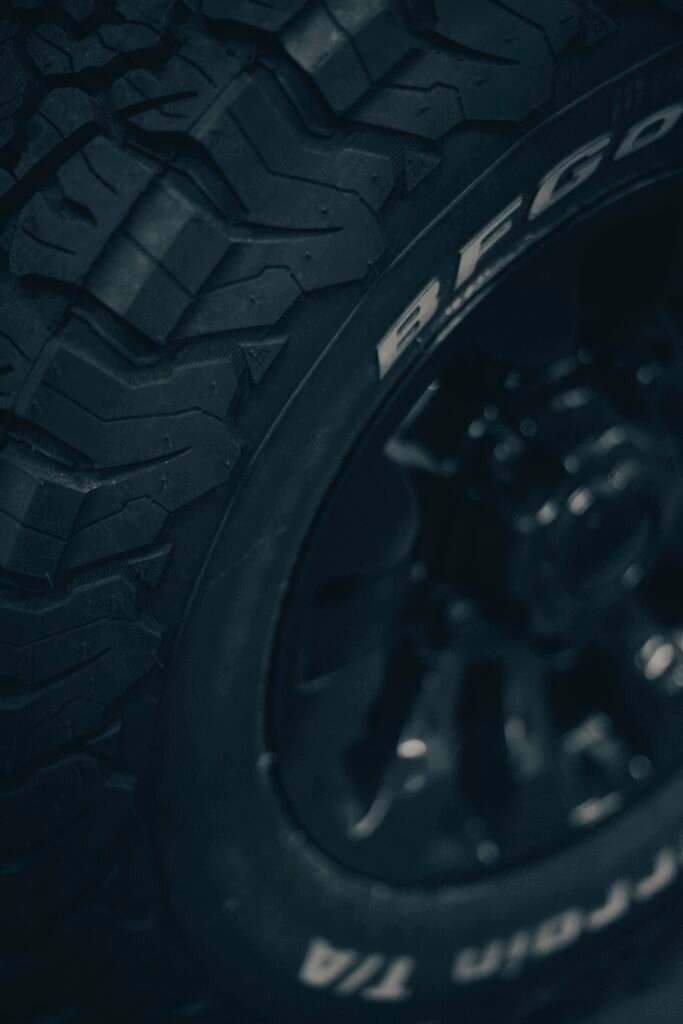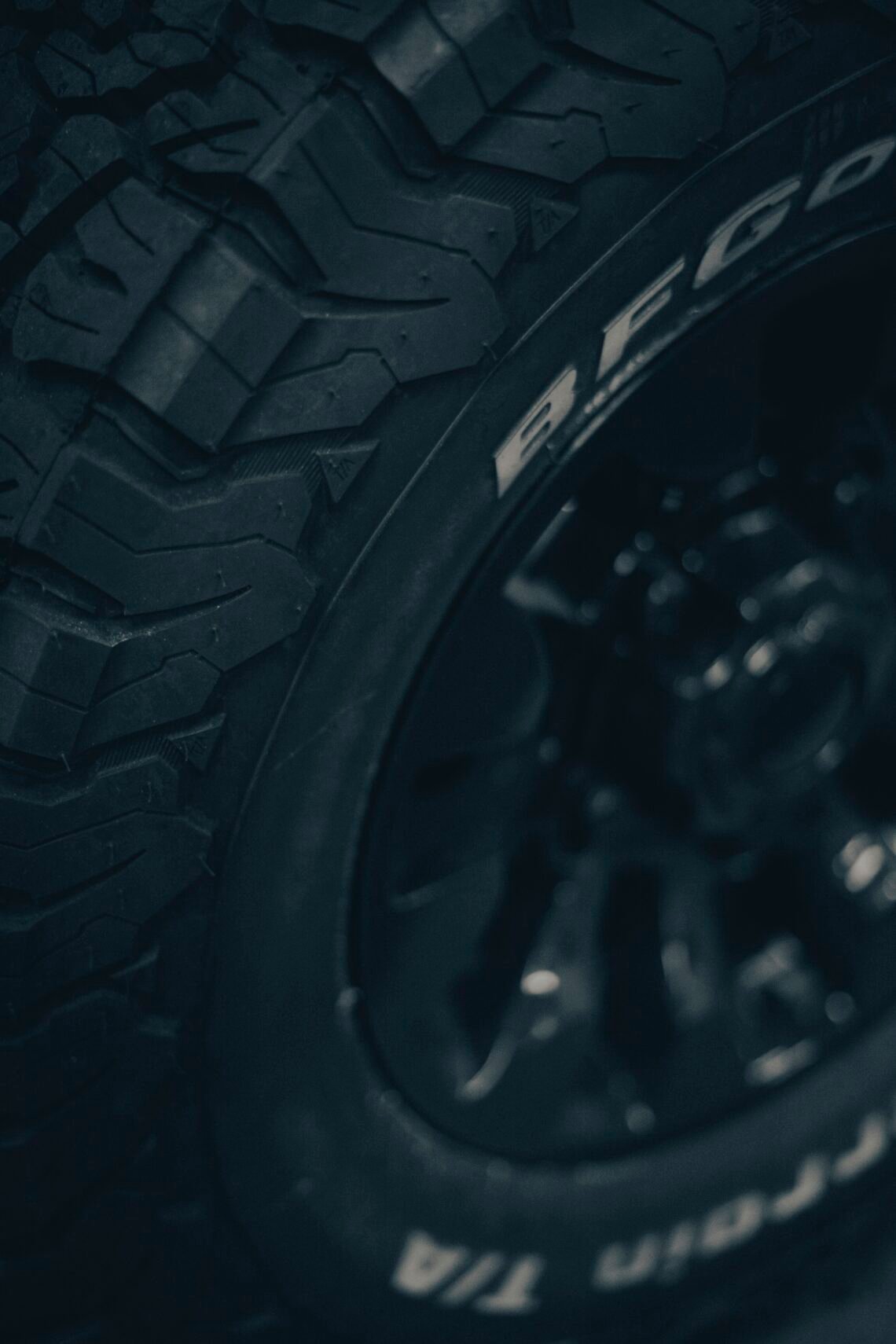Maintaining your tires properly is essential for a safe and smooth driving experience. In this informative article, you’ll find some top tips for taking care of your tires on your own. From regular inspections to proper inflation and rotation, these easy-to-follow guidelines will help you extend the lifespan of your tires and ensure optimal performance on the road. So, buckle up and get ready to become a tire care pro with our DIY Tire Care Guide.

This image is property of images.unsplash.com.
Choosing the Right Tires
Consider Your Driving Needs
When it comes to choosing the right tires for your vehicle, it’s important to consider your driving needs. Are you primarily driving on highways or city streets? Do you often encounter rough terrain or off-road conditions? Understanding your driving habits and needs will help you determine the type of tire that is best suited for your vehicle.
If you frequently drive on highways and city streets, all-season tires may be the most suitable choice. These tires are designed to provide a smooth and comfortable ride, excellent traction on wet and dry surfaces, and good performance in various weather conditions. On the other hand, if you frequently encounter rough terrain or off-road conditions, you may want to consider all-terrain tires or mud-terrain tires for enhanced durability and traction.
Select the Right Tire Size
Choosing the right tire size is crucial for your vehicle’s performance and safety. The size of your tires is typically indicated by a combination of letters and numbers on the sidewall of the tire. This information includes the tire width, aspect ratio, construction type, and wheel diameter.
To determine the correct tire size for your vehicle, you can refer to your vehicle’s owner’s manual, the placard located on the driver’s side door jamb, or consult with a tire professional. Using the wrong tire size can lead to decreased performance, compromised handling, and potential safety risks.
Choose the Appropriate Tire Type
In addition to considering your driving needs and selecting the right tire size, it’s important to choose the appropriate tire type. There are various types of tires available, each designed to excel in different conditions and provide specific benefits.
For everyday driving, all-season tires are a popular choice. These tires offer a balance of performance, comfort, and traction in a variety of weather conditions. If you live in an area with harsh winters, you may also want to consider winter tires. Winter tires are specifically designed to provide enhanced traction and handling in snow and ice.
For those seeking high-performance capabilities, performance tires are designed to deliver improved cornering, responsive handling, and enhanced grip. However, it’s important to note that performance tires may sacrifice some comfort and tread life compared to other tire types.
Regular Tire Inspections
Check the Tire Pressure
Regularly checking the tire pressure is essential for maintaining optimal tire performance and safety. Underinflated or overinflated tires can affect handling, fuel efficiency, and tire wear. To ensure proper tire pressure, you can use a tire pressure gauge to measure the pressure in each tire.
Most vehicles have a recommended tire pressure range, which can be found in the owner’s manual or on the placard located on the driver’s side door jamb. If the tire pressure is below the recommended range, you will need to add air. Conversely, if the tire pressure is above the recommended range, you will need to release some air.
Inspect for Any Signs of Wear and Tear
Regularly inspecting your tires for signs of wear and tear is crucial for identifying potential issues before they become major problems. Look out for any visible cracks, cuts, or bulges on the sidewalls of the tires. These can be signs of damage or weakening of the tire structure.
Check the tread surface for uneven wear patterns, as this may indicate misalignment, improper tire inflation, or suspension issues. Additionally, keep an eye out for any embedded foreign objects, such as nails or screws, which can cause tire punctures if not addressed.
Look for Any Bulges or Blisters
Bulges or blisters on the sidewall of a tire can be a serious safety concern. These bulges or blisters are often a result of impact damage or structural weakness within the tire. If you notice any bulges or blisters, it’s important to have the tire inspected by a professional as soon as possible. Driving on a tire with bulges or blisters can lead to tire failure and potentially dangerous situations.
Examine the Tread Depth
The tread depth of your tires plays a crucial role in maintaining traction and grip on the road. As the tires wear down over time, the depth of the tread diminishes, which can result in decreased performance, especially in wet or snowy conditions. To check the tread depth, you can use a tread depth gauge or simply insert a penny into the tread with Lincoln’s head facing down. If you can see the top of Lincoln’s head, it may be time to replace your tires.
It’s important to note that some jurisdictions have legal requirements for minimum tread depth, so be sure to check your local regulations to ensure compliance.
Proper Tire Inflation
Understand the Recommended Tire Pressure
Understanding the recommended tire pressure for your specific vehicle is essential for maintaining proper tire inflation. The recommended tire pressure can typically be found in your vehicle’s owner’s manual or on the placard located on the driver’s side door jamb. It’s important to follow these recommendations to ensure optimal tire performance and safety.
Use a Reliable Tire Pressure Gauge
To accurately measure the tire pressure, it’s crucial to use a reliable tire pressure gauge. There are various types of tire pressure gauges available, including digital gauges, dial gauges, and pencil gauges. Choose a gauge that is easy to use and provides accurate readings. It’s also a good idea to keep the tire pressure gauge in your vehicle for regular checks.
Check the Tire Pressure Regularly
Tire pressure can fluctuate due to changes in temperature, driving habits, and other factors. Therefore, it’s important to check the tire pressure regularly, ideally once a month. Additionally, it’s recommended to check the tire pressure before long trips or when carrying heavy loads, as the tire pressure may need to be adjusted to accommodate the extra weight.
Inflate the Tires to the Correct Pressure
Once you have determined the recommended tire pressure, it’s time to inflate the tires to the correct pressure. You can use an air compressor or visit a gas station with an air pump. It’s important to avoid overinflating or underinflating the tires, as this can negatively impact tire performance and safety.
When inflating the tires, it’s best to start with all tires at the same pressure and adjust accordingly. After inflating the tires, double-check the pressure using a tire pressure gauge to ensure accuracy.
Rotating and Balancing Tires
Know when to Rotate and Balance Your Tires
Rotating and balancing your tires is an essential part of tire maintenance to promote even tread wear and extend the lifespan of the tires. As a general rule of thumb, it’s recommended to rotate the tires every 6,000 to 8,000 miles or as specified by the vehicle manufacturer. Additionally, balancing the tires should be done whenever you notice an imbalance or vibration.
Follow the Recommended Rotation Patterns
The recommended rotation patterns for your tires may vary depending on the type of vehicle you drive, whether it’s front-wheel drive, rear-wheel drive, or all-wheel drive. Consult your vehicle’s owner’s manual or a tire professional to determine the appropriate rotation pattern for your specific vehicle.
Rotating the tires involves moving them from one position to another, typically from front to rear and vice versa. By doing so, you ensure that the tires wear more evenly, which contributes to better performance, handling, and traction.
Ensure Proper Wheel Torque
After rotating the tires, it’s important to ensure that the wheel nuts or lug nuts are tightened to the proper torque specification. A torque wrench should be used to tighten the wheel nuts to the manufacturer’s recommended torque, as over-tightening or under-tightening can lead to wheel and tire damage. Regularly checking and maintaining proper wheel torque is important for safety and prevents wheel loss.

This image is property of images.unsplash.com.
Maintaining Proper Wheel Alignment
Learn the Signs of Misaligned Wheels
Misaligned wheels can lead to uneven tire wear, reduced handling, and decreased fuel efficiency. Learning how to recognize the signs of misalignment can help you address the issue promptly. Some common signs of misaligned wheels include uneven tire wear, pulling to one side while driving, a crooked steering wheel when driving straight, or vibrations felt in the steering wheel.
Get Regular Wheel Alignments
To maintain proper wheel alignment, it’s recommended to schedule regular wheel alignment inspections and adjustments. A wheel alignment should be performed by a professional technician using specialized equipment. Typically, a wheel alignment is recommended every 12,000 miles or if you notice any signs of misalignment.
During a wheel alignment, the technician will adjust the angles of the wheels to ensure they are properly aligned with the vehicle’s specifications. This helps to optimize tire performance, extend tire life, and improve overall vehicle handling.
Align the Wheels After Hitting a Curb or Pothole
Even a minor impact with a curb or pothole can throw off the wheel alignment. If you’ve hit a curb or pothole, it’s a good idea to have the wheels aligned as soon as possible. Delaying a wheel alignment after such an impact can lead to accelerated tire wear and potential suspension damage.
Proper Storage and Seasonal Tire Changes
Clean and Dry the Tires Before Storage
If you need to store your tires for an extended period, it’s important to clean and dry them before storage. Remove any dirt, mud, or debris from the tires using a mild soap and water solution. Ensure that the tires are completely dry to prevent the growth of mold or mildew.
Store the Tires in a Cool and Dry Location
When storing your tires, it’s crucial to choose a cool and dry location. Exposure to direct sunlight, extreme temperatures, and humidity can accelerate tire degradation. Consider using tire racks or stacking the tires vertically to prevent them from developing flat spots.
Consider Using Tire Storage Bags
Tire storage bags can provide an extra layer of protection for your tires during storage. These bags help to keep the tires clean and shield them from damaging UV rays. When using tire storage bags, ensure that the tires are clean and dry before placing them inside.
Swap to Winter Tires in Cold Weather
In regions with cold winters and snowy conditions, it’s important to consider switching to winter tires. Winter tires are specifically designed to provide enhanced traction and handling in winter weather, thanks to their unique tread patterns and rubber compounds. When temperatures drop below 45°F (7°C), winter tires have better grip and performance compared to all-season or summer tires.

This image is property of images.unsplash.com.
Repairing and Patching Tires
Assess the Damage Viability
When it comes to repairing tires, it’s important to assess the viability of the damage. Some punctures or cuts can be safely repaired, while others may require tire replacement. Generally, punctures smaller than 1/4 inch in diameter and located in the tread area can be repaired. However, it’s best to consult a tire professional to determine if the damage is repairable or if the tire needs to be replaced.
Fixing Punctures with a Tire Repair Kit
To fix minor punctures in the tread area, you can use a tire repair kit. These kits typically include a plug that is inserted into the punctured area to seal it. It’s important to follow the instructions provided in the kit carefully and ensure a proper seal. Keep in mind that tire repair kits are temporary solutions, and it’s advisable to have the tire inspected and repaired professionally as soon as possible.
Patching Larger Holes or Cuts
For larger holes or cuts in the tire, a patch repair may be necessary. Patch repairs are more extensive and involve removing the damaged section of the tire and applying a patch on the inside to seal the area. Patch repairs should always be performed by a professional tire technician to ensure the proper repair and structural integrity of the tire.
Avoiding Common Tire Damages
Avoid Potholes and Obstacles on the Road
Potholes and obstacles on the road can cause significant damage to your tires. When driving, be vigilant and try to avoid potholes whenever possible. If you can’t avoid them, slow down to reduce the impact on your tires. Additionally, be cautious of debris or other obstacles on the road that may cause tire punctures or damage.
Be Cautious with Curbs and Driveway Edges
Curbs and driveway edges can pose a risk to your tires if not approached carefully. Avoid hitting curbs or driving over them, as the impact can damage the sidewalls or result in misalignment. When parking, be mindful of the distance between the curb and your tires to prevent scraping or rubbing.
Avoid Overloading the Vehicle
Overloading your vehicle can put excessive pressure on the tires, leading to premature tire wear and potential tire failure. Always adhere to the recommended maximum load capacity specified by the vehicle manufacturer. Distribute the load evenly and avoid exceeding the weight limits for the vehicle and the tires.
Maintaining Proper Tire Hygiene
Clean the Tires Regularly
Keeping your tires clean not only improves their appearance but also helps to maintain their integrity. Regularly wash your tires to remove dirt, mud, and debris that can accumulate and potentially cause damage over time. A simple routine of cleaning the tires whenever you wash your vehicle can go a long way in preserving their condition.
Use Mild Soap and Water for Cleaning
When cleaning your tires, it’s best to use a mild soap and water solution. Avoid using harsh chemicals or abrasive cleaners, as they can potentially damage the tire’s sidewall or rubber compound. Use a soft brush or sponge to gently scrub the tires, paying attention to the tread grooves and sidewalls.
Apply a Tire Protectant or Dressing
After cleaning the tires, applying a tire protectant or dressing can help maintain their appearance and protect them from UV rays. These products help to prevent cracking, fading, and discoloration of the tire sidewalls. Choose a protectant or dressing specifically formulated for tires and follow the manufacturer’s instructions for application.
Knowing When to Replace Your Tires
Inspect for Signs of Irreparable Damage
Over time, tires undergo wear and tear and may develop irreparable damage. Inspect your tires regularly for signs of damage, such as deep cuts, bulges, or sidewall cracks. If you notice any of these signs, it’s important to have the tire inspected by a professional. Continuing to drive on a tire with irreparable damage can result in a blowout or sudden tire failure.
Check for Tread Depth Indicator Bars
Tread depth is a key factor in tire performance and safety. Most tires have tread depth indicator bars located within the tread grooves. These bars are a visual indicator that helps determine when the tires should be replaced. If the tread depth indicator bars are visible or the tread depth is less than 2/32 of an inch, it’s time to replace your tires.
Replace Tires based on Age
Even if your tires appear to be in good condition and have sufficient tread depth, it’s important to consider their age. Tires age over time due to exposure to the elements, temperature fluctuations, and other factors. The general guideline is to replace tires that are 6 years or older, regardless of their condition. A tire’s age can be determined by checking the tire identification number (TIN) on the sidewall, which includes the manufacturing date.
By following these DIY tire care tips, you can ensure that your tires perform optimally, last longer, and keep you safe on the road. Remember to regularly inspect your tires, maintain proper tire inflation, and address any issues promptly. With proper care and maintenance, your tires will provide you with a smooth and safe driving experience for miles to come.





